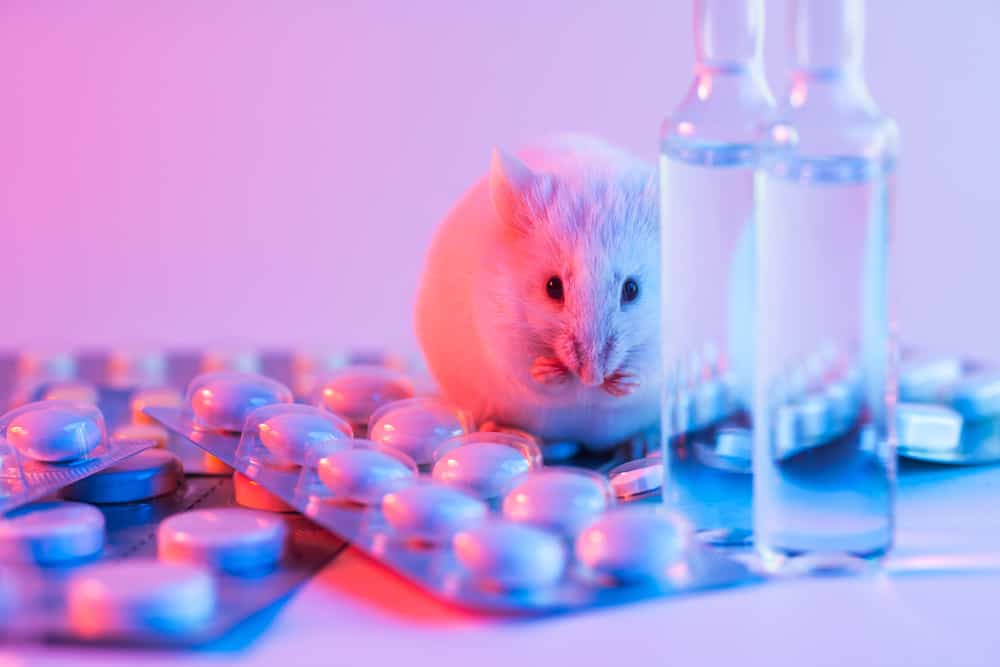When over 17 million animals are killed in the US every year for experimentation, medical training, biology lessons, as well as chemical, drug, food, and cosmetic testing – you would think the animal testing regulations would be rigorous. But that’s often not the case, and we’re going to share why.
Government or independent regulatory bodies are meant to play a big part in making sure standardized procedures are followed during animal testing.
However, these regulations often include oversights that result in inadequate cover or consideration for the majority of the animals used in lab experimentations, such as mice.
Animal Testing Regulations in the US
Animal testing is an awful but historically important step in drug and food formulation. Medical trainers rely on animals for experimentation because testing on humans is out of the question.
In saying this, animal testing is no longer necessary all the time – especially in areas such as cosmetics. And the animals that are tested on, need to be cared for adequately during trials. For this reason, it only makes sense to have regulations on how to do it right.
The US has made efforts to ensure there are proper regulations when it comes to testing on animals. The 1966 Animal Welfare Act (AWA) was signed into law and included several amendments. The act stipulates the standard treatment of animals in research, exhibition, transport, and by dealers. However, while the act applies to all types of research, it doesn’t include all animals.
The act applies to only warm-blooded animals, but it’s only limited to some. It doesn’t cover mice, birds, and rats, which make up about 95% of the animals used in research.
Other laws, guidelines, and policies exist that cover different animals. However, they all look to the Animal Welfare Act as the standard, which mainly focuses on standards for animal housing and pain control.
Regulatory Bodies Responsible for Enforcing Animal Testing Regulations
In the US, there are several bodies responsible for enforcing animal testing regulations. Some are governmental institutions that focus on upholding the federal law (AWA), and others are non-profit institutions. They include:
The Public Health Service (PHS)
PHS is responsible for overseeing the federal bodies that do the most testing on animals – the Food and Drug Administration (FDA) and the Centers for Disease Control and Prevention (CDC). PHS has policies in place dictating the proper care for vertebrate animals. However, there’s great oversight from the institution.
You see, PHS only requires a written assurance of compliance through the Office Laboratory Welfare (OLW). Little action is taken when laboratories are found to be deficient. Furthermore, OLW has no follow-up or on-site inspection, which makes the policy inadequate.
The United States Department of Agriculture (USDA)
The USDA is responsible for overseeing labs that research animals and breeders who sell animals for lab use. However, many challenges in this regulatory body make it hard to enforce the law and uphold high levels of care for animals. These include:
The United States Department of Agriculture (USDA)
Apart from federal regulatory bodies, there are independent bodies that claim to protect the welfare of animals. These include:
Shortcomings in Animal Testing Laws
Understaffing and underfunding isn’t the only challenge that regulatory bodies face in ensuring compliance with AWA. PETA reports that about 82% of the IACUC membership comprises of pro animal testers and laboratory veterinarians. As a result, animal experimenters' dominance in the committee may dilute the voice of members who are there to protect animal welfare.
The federal law is also not entirely protective of the animals. You see, while AWA stipulates safe handling of animals, it doesn’t exactly prohibit any procedure done on animals.
As a result, animals covered by the act can still be shocked, burned, brain-damaged, forcefully restrained, or addicted to drugs because the law doesn’t prohibit it.
That’s not all. The federal law has also not warned against using animals for testing when there are alternatives testing methods. For this reason, more and more experimenters continue to use animals even in situations where they shouldn’t.
Understaffing and underfunding isn’t the only challenge that regulatory bodies face in ensuring compliance with AWA. PETA reports that about 82% of the IACUC membership comprises of animal testers and laboratory veterinarians. This means that the voice of the members in favor of animal testing will be stronger than of those who are there to protect animal welfare.
The federal law is also not entirely protective of the animals. You see, while AWA stipulates safe handling of animals, it doesn’t exactly prohibit any procedure done on animals.
As a result, animals covered by the act can still be shocked, burned, brain-damaged, forcefully restrained, or addicted to drugs because the law doesn’t prohibit it.
That’s not all. The federal law has also not warned against using animals for testing when there are alternatives testing methods. For this reason, more and more experimenters continue to use animals even in situations where they shouldn’t.
Facts about Animal Testing
To give you a clear picture of the state of animal testing regulations, we scoured the internet and compiled a few interesting facts you may be interested to know.:
Final Thought
Implementing AWA was a move in the right direction by the US government. However, the regulatory bodies responsible for enforcing these laws and ensuring animals are protected have failed. The number of animals dying from research is appalling, and it doesn’t help that experimenters make up the vast majority of the committees involved in making decisions.
The US should borrow a leaf from Europe and ban all animal testing procedures, which have clearly proven not to be making any difference in human health. This would be a step in the right direction. It not only protects animals but also ensures research goes into formulating procedures that benefit humans.


